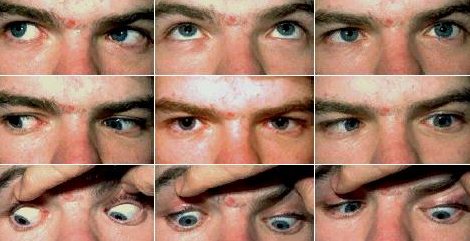-
Abducent nerve or 6th Cranial Nerve supplies the lateral rectus muscle
Sixth nerve palsy- (the abducens nerve) is responsible for contracting the lateral rectus muscle to abduct (i.e., turn out) the eye. The inability of an eye to turn outward results in a convergent strabismus or esotropia of which the primary symptom is double vision or diplopia (two images in this case appear side-by-side. The condition is commonly unilateral but can also occur bilaterally.
The unilateral abducens nerve palsy is the most common of the isolated ocular motor nerve palsies. Also known as Lateral rectus palsy or Cranial nerve VI palsy
Diplopia is typically experienced by adults with VI nerve palsies, but children with the condition may not experience diplopia due to suppression. Whilst this is a positive adaptation in the short term, in the long term it can lead to a lack of appropriate development of the visual cortex giving rise to permanent visual loss in the suppressed eye; a condition known as amblyopia.
The most common causes of VIth nerve palsy in adults are: Vasculopathic (diabetes, hypertension, atherosclerosis), trauma, idiopathic. Less common: Increased intracranial pressure, giant cell arteritis, cavernous sinus mass (e.g. meningioma, Brain stem Glioblastoma aneurysm, metastasis), multiple sclerosis, sarcoidosis/vasculitis, postmyelography or lumbar puncture, stroke (usually not isolated). Chiari Malformation, Hydrocephalus, Inter-cranial hypertension
In children typical etiologies are traumatic, neoplastic (most commonly brain-
In children typical etiologies are traumatic, neoplastic (most commonly brain- stem glioma), as well as idiopathic. Sometimes benign and rapidly recovering isolated VIth nerve palsy can occur in childhood, sometimes precipitated by ear, nose and throat infections.
Your Optometrist may use Prisms in Spectacles to relive the diplopia some times covering one eye maybe used.
Surgery may-be requiredMore On 6th Nerve Palsy
- (the abducens nerve) is responsible for contracting the lateral rectus muscle to abduct (i.e., turn out) the eye. The inability of an eye to turn outward results in a convergent strabismus or esotropia of which the primary symptom is double vision or diplopia (two images in this case appear side-by-side. The condition is commonly unilateral but can also occur bilaterally.
Location & Contact Details
© 2017 - 2025 Noel Templeton Optometrists



